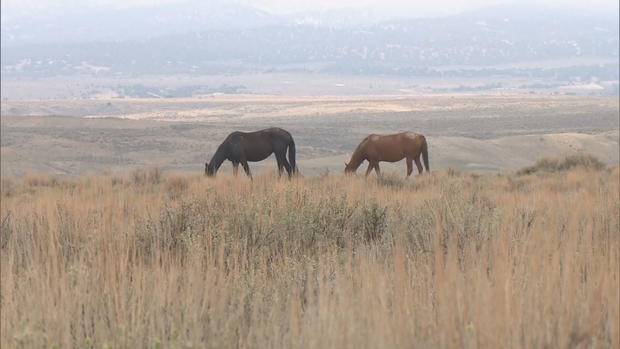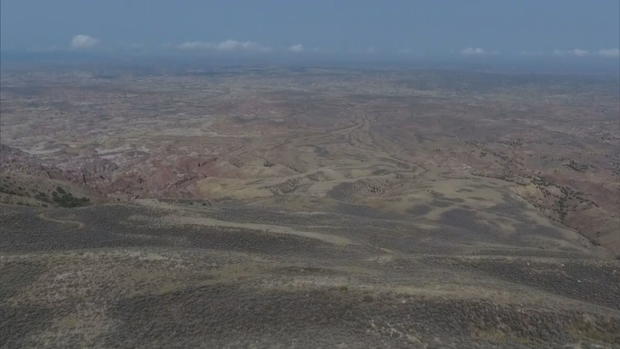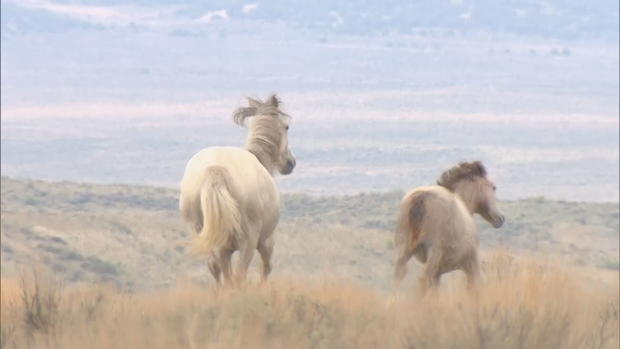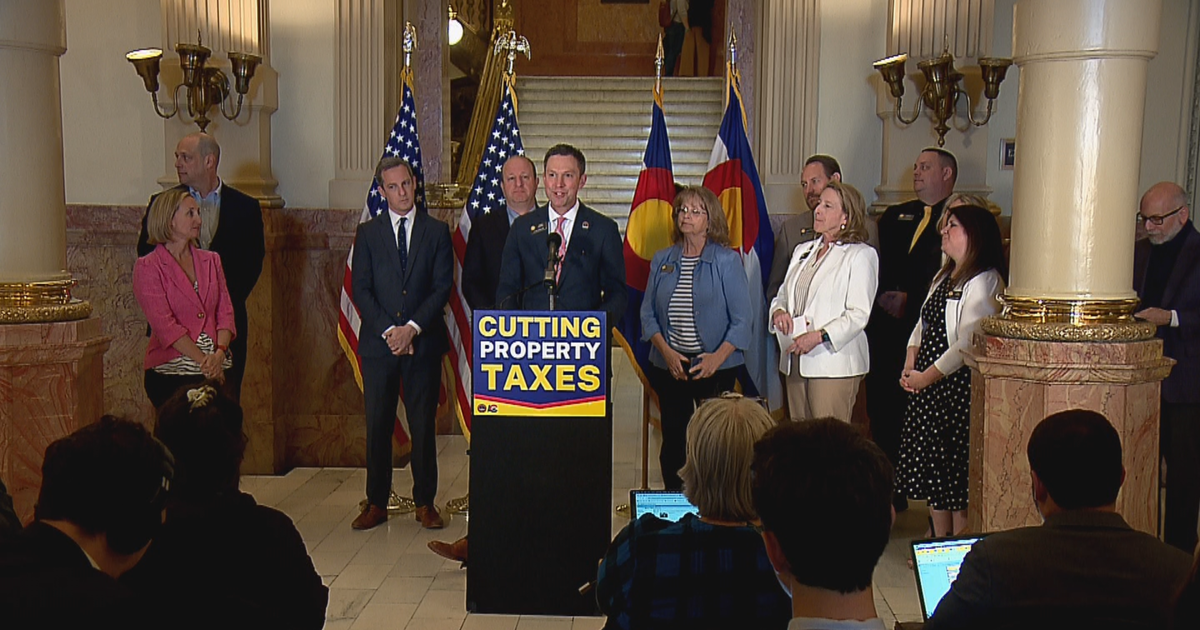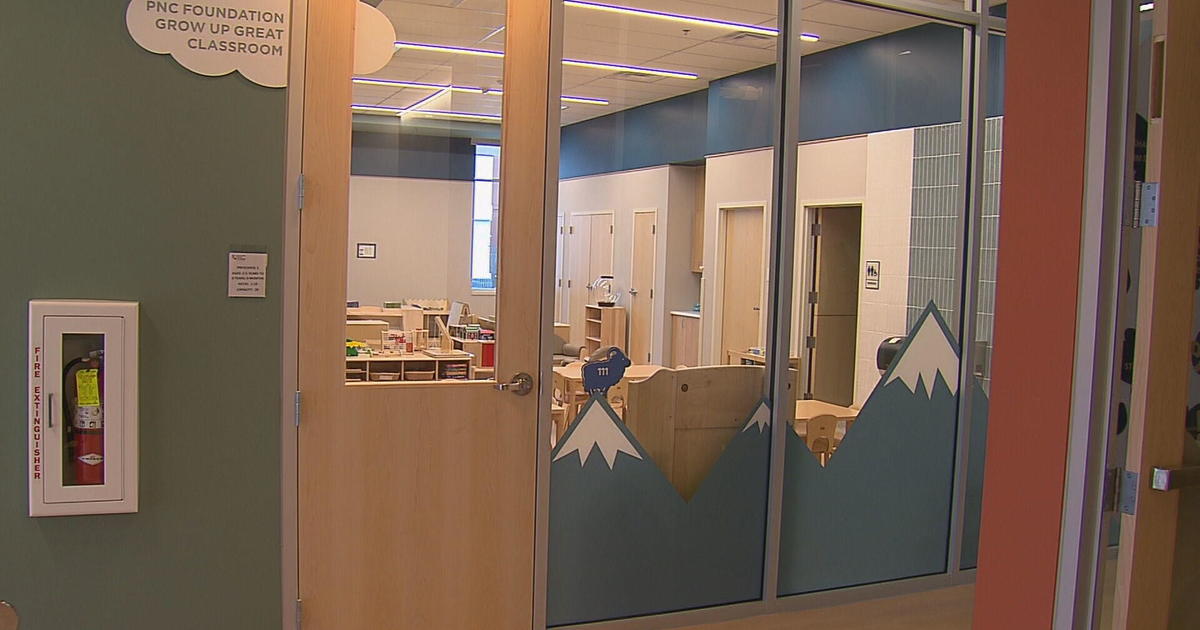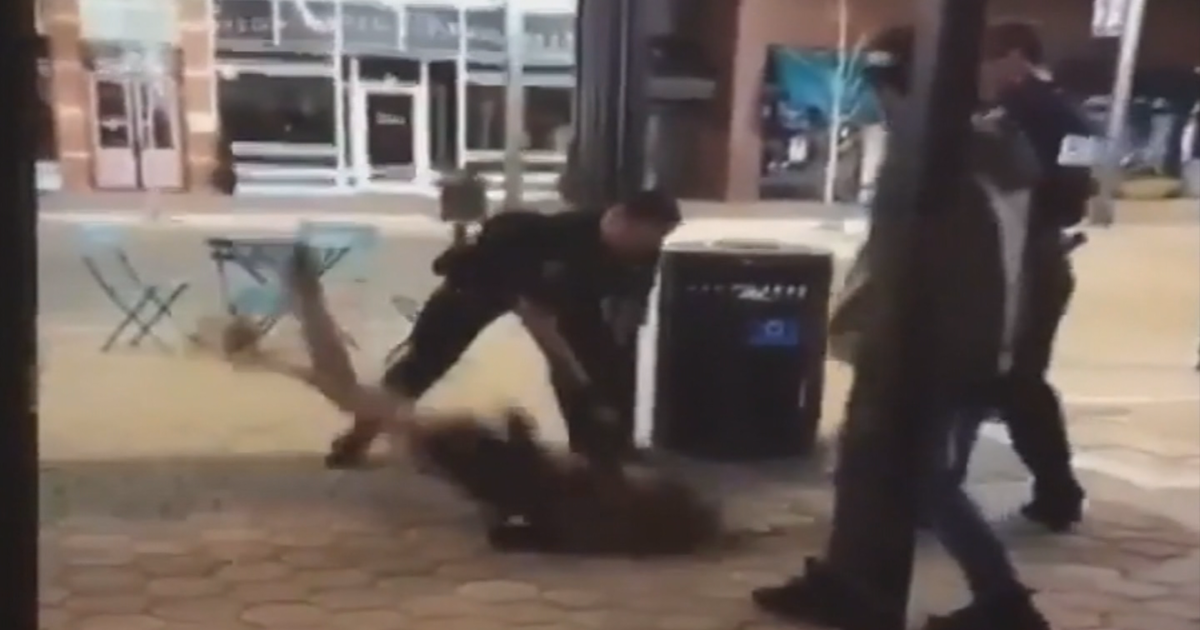Wild Horse Roundup In Sand Wash Basin Will Continue Friday Despite Pleas To Stop It
SAND WASH BASIN, Colo. (CBS4)- The wild horse roundup in the Sand Wash Basin will continue Friday despite the pleas from the governor and other state officials to halt operations. The Bureau of Land Management says while there's finally enough water to get the horses through the summer and fall, there's a bigger, long-term issue.
"Earlier in the year we were extremely worried about that [water], not only for the horses but for the rangeland, for the public lands they rely on and we're very fortunate the rains have come but they've come too late for the vegetation. We can't allow these animals to go into winter with this big of number. The foals will die first… then the mares… we can't allow that," said Bruce Sillitoe, Manager for the Little Snake Field Office.
Another concerning sign is the decline of the sage grouse- an indicator species for how the land is doing as a whole.
"The Greater Sage Grouse is telling us, it's not okay out here. Everywhere in Colorado that bird has increased by 10%, its population. Except for the Sand Wash Basin. It's decreased by 26%. We need to listen to that," said Sillitoe.
Of the nearly 850 horses that the BLM manage across the 150,000 acres of the Sand Wash, data suggests that the cap for appropriate management levels (AML) is 362, the lowest number being 162.
"The upper end is 362 horses which is actually supposed to be the trigger to gather back down to the lower amount. We're trying to get back down to the low AML and continue to administer PZP contraception, which is far easier to do on a smaller population, and then the goal is to do more frequent bait trap type gathers, so we don't have this big up and down anymore," said Hunter Seim, Assistant Manager for the Little Snake Field Offices.
While "helicopter drive trapping" is the most efficient way to capture the nearly 700 horses to meet the low AML, the method is among the top concerns for advocates.
"There are 12 new foals that have been born in the last three weeks and a helicopter roundup is a terrible thing for any horse, but for the foals, they will often get left behind, they'll get injured, and the contractor will send cowboys out to rope the foals to catch them if they've been left behind and drag them into the trap," said Carol Walker.
Walker is a professional photographer and has been documenting the herd for more than a decade. Helicopters aside, she just wants to have public input in how the herd is managed.
"The BLM was not willing to work with us at all and Governor Polis had this wonderful letter saying that he wanted to have a moratorium on roundups for 6 months, he wanted to work with stakeholders- meaning members of the public to come up with a solution, and the Department of the Interior is not interested," she said.
Wednesday marked day one of the 14 to 25 days set to gather the horses. The BLM said just over 60 horses were captured with only a few superficial scrapes, which is not uncommon.
"There's some tussling and stuff especially some of the stallions… they're trying to assert dominance with each other in these tight confines," said Seim. "Over the course of two or three hours, they begin to calm down."
The horses are then transported to Canyon City for processing and adoption. Currently there is an incentive program that offers people $1,000 to adopt and care for the horse, the BLM says welfare checks ensure the horses are being properly cared for.
For Walker, it all comes back to allowing the public to have a say. She believes the urgency in removing the horses is more due to pressure from ranchers rather than the overpopulation of the horses
"They have sheep, and the sheep ranchers are complaining that the horses have eaten all the forage even though the number of sheep that are allowed to graze in the basin far outnumbers the number of horses, and the sheep are very destructive to the range," said Walker.
Some of the ranchers have reduced their herd sizes and the BLM says the livestock, which winter in the basin, use around only around 5% of the resources the horses used.
"The wild horses, according to the 1971 Wild Horse and Burro Act, are supposed to be the principal species. They are supposed to be managed as the principal species in the area where they are found," Walker argues.
But long-term, without a reduction the horses and the land will suffer and as with any species in decline, when they are at their worst, it becomes a much harder problem to fix.
"When they become overpopulated, they do use a very large percentage of the resources, but we can't wait until they are showing total negative health signs before we remove them. We need to get them back into the appropriate management level, so we don't have the major problems," Sillitoe continued, "Let's not wait until they're ready to go over the cliff. We care about those horses, we care about them, we care about the rangeland resources that they rely on, we care about the other animals- the greater sage grouse, the antelope, we care about them."
